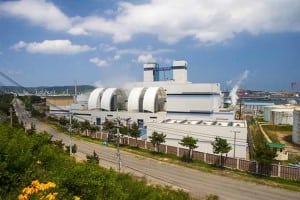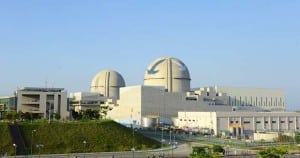South Korean Nuclear Plants Shut Down After Record Earthquake
In response to what was a record earthquake for the country, four of South Korea’s 25 nuclear power plants have been shut down as a precautionary measure.
The Yonhap News Agency reported that the country’s meteorological agency said Monday’s 8:32 p.m. magnitude 5.8 quake was a record for the Korean Peninsula and could be felt throughout the country. The epicenter was reportedly near the Naenam-myeon region, “about 8 kilometers south of the historic city of Gyeongju.” That tremor was preceded by a 5.1-magnitude one about an hour earlier. The U.S. Geological Survey reported that the larger quake was of a magnitude 5.4.
Yonhap reported that “Korea Hydro & Nuclear Power Co., which operates the country’s nuclear plants, said none of its reactors including those at the Wolsong, Hanul and Gori plants, which are close to the epicenter, were affected by the earthquake, adding they are still producing electricity. On the other hand, a combined cycle power plant in Ulsan, not far from Gyeongju, reported one of its thermal power generation units going off line.”
The Korean Herald reported that “The Ministry of Trade, Industry and Energy said the [Ulsan] plant was designed to stop operation in the wake of any minor tremor, noting that it is in the process of looking into the cause.” Although three other liquefied natural gas (LNG) power plants also were temporarily taken offline, no damage to any of them has been reported.

However, AFP/Reuters reported that State-run Korea Hydro and Nuclear Power Co. early on Tuesday said that it had suspended operations at its four nuclear plants, Wolsong Units 1, 2, 3, and 4, which total 2,779 MW. Shin Kori No. 3 (the world’s first 1,400-MW Advanced Pressurized Reactor, a South Korean Generation III design) was already offline for maintenance, and as many as three others may also have already been offline when the quakes occurred.

An official of Korea Nuclear Power told the press that the country’s nuclear plants “were built to withstand an earthquake with a magnitude ranging between 6.5 and 7,” the Korean Herald reported.
This week’s quakes appear to have no confirmed connection to the nuclear tests in North Korea last week, which the U.S. Geological Survey reported as causing a 5.3-magnitude “artificial earthquake.”
—Gail Reitenbach, PhD, editor (@GailReit, @POWERmagazine)